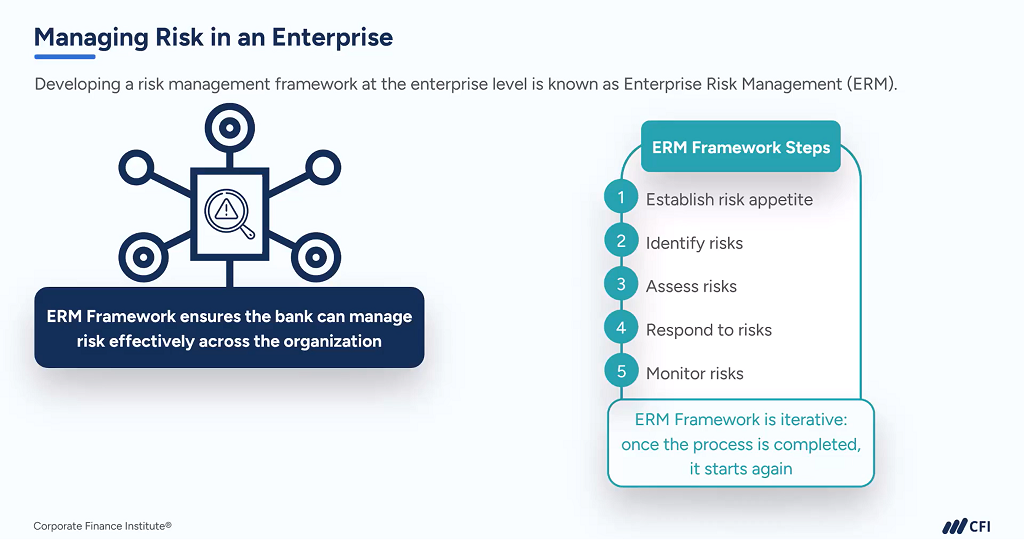Understanding the Value of Risk Management in Contemporary Business Practices
Understanding the Value of Risk Management in Contemporary Business Practices
Blog Article
Exploring the Relevance of Risk Management for Effective Decision-Making Techniques
In the detailed world of company, Risk Management arises as an important aspect in the decision-making process. The capability to recognize potential risks and chances, and plan accordingly, can lead to the distinction between success and failure.
Recognizing the Idea of Risk Management
Risk Management, a critical part in decision-making, is typically misunderstood or oversimplified. Risk Management involves regimented and structured techniques, utilizing information and insightful analyses. From financial unpredictabilities, legal obligations, strategic Management mistakes, to accidents and all-natural calamities, it deals with numerous risks - importance of risk management.
The Duty of Risk Management in Decision-Making Processes
In the realm of calculated preparation and company procedures, Risk Management plays an integral function in decision-making processes. It helps in identifying potential dangers and unpredictabilities that can influence the success of service goals. By tracing these risks, business can develop techniques to alleviate their influence, guaranteeing organization continuity and security. Risk Management hence becomes a crucial device in decision-making, helping leaders to make informed selections based on a detailed understanding of the risks involved. It motivates a proactive technique, making it possible for companies to prepare and prepare for for feasible future scenarios. This considerably reduces the probability of unfavorable repercussions, promoting a lot more efficient and effective decision-making strategies. Therefore, Risk Management offers as an essential part in the decision-making procedures of any kind of company.

Exactly How Risk Management Improves Strategic Planning
In the context of strategic preparation, Risk Management plays a crucial role. Initiating with the identification of possible threats, it better encompasses the application of Risk mitigation procedures. The function of Risk Management is not static but dynamic, as it requires continuous tracking and adjusting of techniques.
Determining Possible Risks

Carrying Out Risk Mitigation
Risk reduction techniques can vary from Risk evasion, Risk transfer, to risk decrease. Each technique must be customized to the specific Risk, considering its potential influence and the organization's Risk tolerance. Effective Risk mitigation calls for a deep understanding of the Risk landscape and the prospective effect of each Risk.
Tracking and Adjusting Techniques
Though Risk reduction is an essential action in calculated preparation, constant tracking and adjustment of these approaches is similarly important. This continuous procedure allows companies to identify new threats and reassess existing ones, making sure the implemented methods continue to be effective in the ever-changing service atmosphere. It also gives an opportunity to assess the success of the Risk Management measures, enabling changes to be made where necessary, additional improving tactical preparation. Efficient tracking and change require making use of analytics and vital efficiency signs (KPIs) to determine efficiency. These devices provide important data-driven insights that can notify critical decision-making. As a result, tracking and readjusting Risk Management methods is a vital element for improving a company's resilience and critical planning.
Case Studies: Successful Risk Management and Decision-Making
In the world of organization and finance, successful Risk Management and decision-making usually serve as the columns of prosperous ventures. These instances highlight the value Go Here of sharp Risk Management in decision-making processes. These instances underscore the critical function of Risk Management in critical decision-making.
Tools and Strategies for Reliable Risk Management
These tools, such as Risk registers and heat maps, aid in identifying and evaluating prospective dangers. Risk reaction techniques, an essential element of Risk Management, entail approving, staying clear of, moving, or mitigating threats. With these strategies and devices, decision-makers can navigate the complicated landscape of Risk Management, therefore promoting informed and effective decision-making.
Future Trends in Risk Management and Decision-Making Methods
As we check out the large landscape of Risk Management, it comes to be obvious that the tools and methods made use of today will remain to progress. Future trends direct in the direction of a boosted dependence on modern technology, with fabricated knowledge and artificial intelligence playing substantial functions. These innovations will certainly enable companies to forecast possible risks with higher precision and make even more educated decisions. In addition, there will be an expanding emphasis on resilience, not just in taking care of dangers yet also in getting better from unfavorable situations. The principle of Risk culture, where every participant of an organization is mindful and involved in Risk Management, will get more importance. These trends proclaim an even more comprehensive and proactive technique towards Risk Management and decision-making.
Conclusion

Risk Management therefore comes to be an essential device in decision-making, aiding leaders to make enlightened options based on an extensive understanding of the risks entailed. Risk mitigation strategies can vary from Risk avoidance, Risk transfer, to run the risk of decrease (importance of risk management). Reliable Risk reduction needs a deep understanding of the Risk landscape and the possible effect of each Risk. Risk reaction strategies, a key part of Risk Management, involve approving, preventing, transferring, or mitigating threats. The idea of Risk society, where every member check my blog of a company is conscious and involved in Risk Management, will certainly acquire a lot more prestige
Report this page